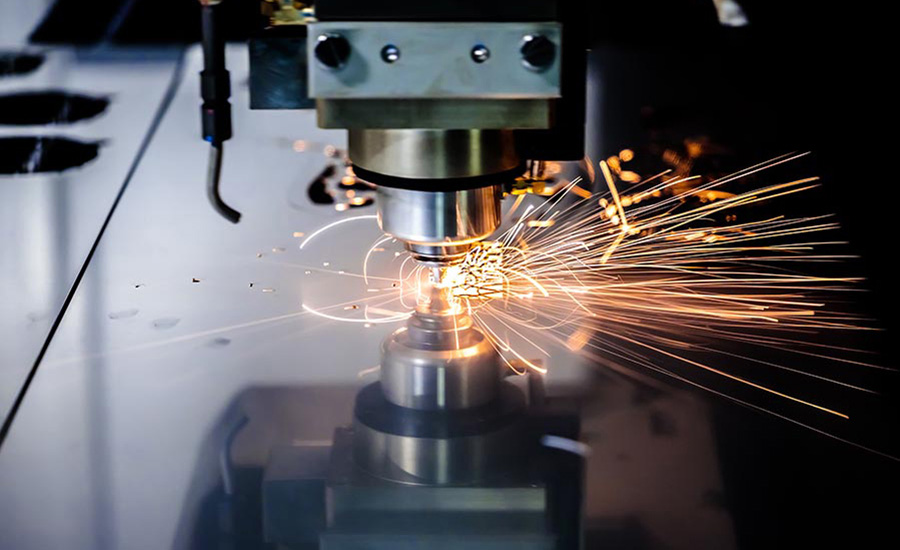Precision laser welding is a method of joining metals or thermoplastics together by using a laser beam to form a weld. Because laser welding is such a concentrated heat source, it can generate narrow, deep welds between square-edged parts in thin materials and high welding speeds of meters per minute in thicker materials.
Laser welding can be divided into two types: keyhole welding and conduction-limited welding. The mode in which the laser beam interacts with the material being welded is determined by the power density of the beam as it strikes the workpiece.
In this article, we’ll look at what precision laser welding is, how accurate it is, and how it works.
Table of Contents
What Is Precision Laser Welding?
Precision welding refers to the process of applying welds to a workpiece in a very precise and controlled manner. Dimensional tolerances for weld location typically range less than 0.2 mm (0.008 inches) for both the position of the weld line and the depth of the weld.
Precision welding is generally used for parts with tight dimensional tolerances, small parts, or parts needing a barely visible line weld. Precision welding typically necessitates computer control of the workpiece and the welding heat source.
It is mostly used on metals. The laser beam’s focal point melts the metals in milliseconds. Because this is a fusion-welding process, there is generally no need for extra items. Spot welding and seam welding are differentiated by particularly strong and dense bonds with materials that remain crack-free.
Because the laser beam emits a precise measurement amount of heat to the processed materials, this method ensures that the welds have no distortions or pores. Hence, precision welding by a laser beam is an excellent option not only for its penetrating results but also for accurate, pinpoint work in difficult-to-reach areas.
How Accurate Is Laser Welding?
Because the beam is so focused, laser welding is employed more frequently in industrial processes than traditional welding because it produces less heat. This implies that heat transfer to the workpiece is much lower, the metallurgical structure is less likely to be impacted, and weld quality is much higher than with traditional welding techniques.
Laser welding is a far more precise manufacturing process, with welds as small as one-hundredth of a millimeter. Small heat pulses are employed to establish the weld, resulting in a higher-quality finish that is stronger and has a better depth-to-width ratio. Welding penetration of up to 15 millimeters of steel or stainless steel can be accomplished depending on laser power.
Another significant benefit of laser welding over other methods is that it can weld a wider range of metals, including high-strength stainless steel, titanium, aluminum, carbon steel, and precious metals such as gold and silver.
Welds are much more accurate than laser welding, and the finish and strength are both superior. As a result, the manufacturing process is ideal for fine components and can be used in areas with limited access. Lasers enable precision and quality where fine components are required.
How Does Precision Laser Welding Work?
Lasers use the concentrated power of a beam to heat and join materials together. While some welding methods are susceptible to distorting the original material, high-precision laser welding systems are more simple to use within specific parameters, making the same form of distortion less likely.
In the automotive industry, precision laser welding systems are common. A laser welding system speeds up the process of joining components such as roofs, doors, and filters, saving brands money in the long run.

